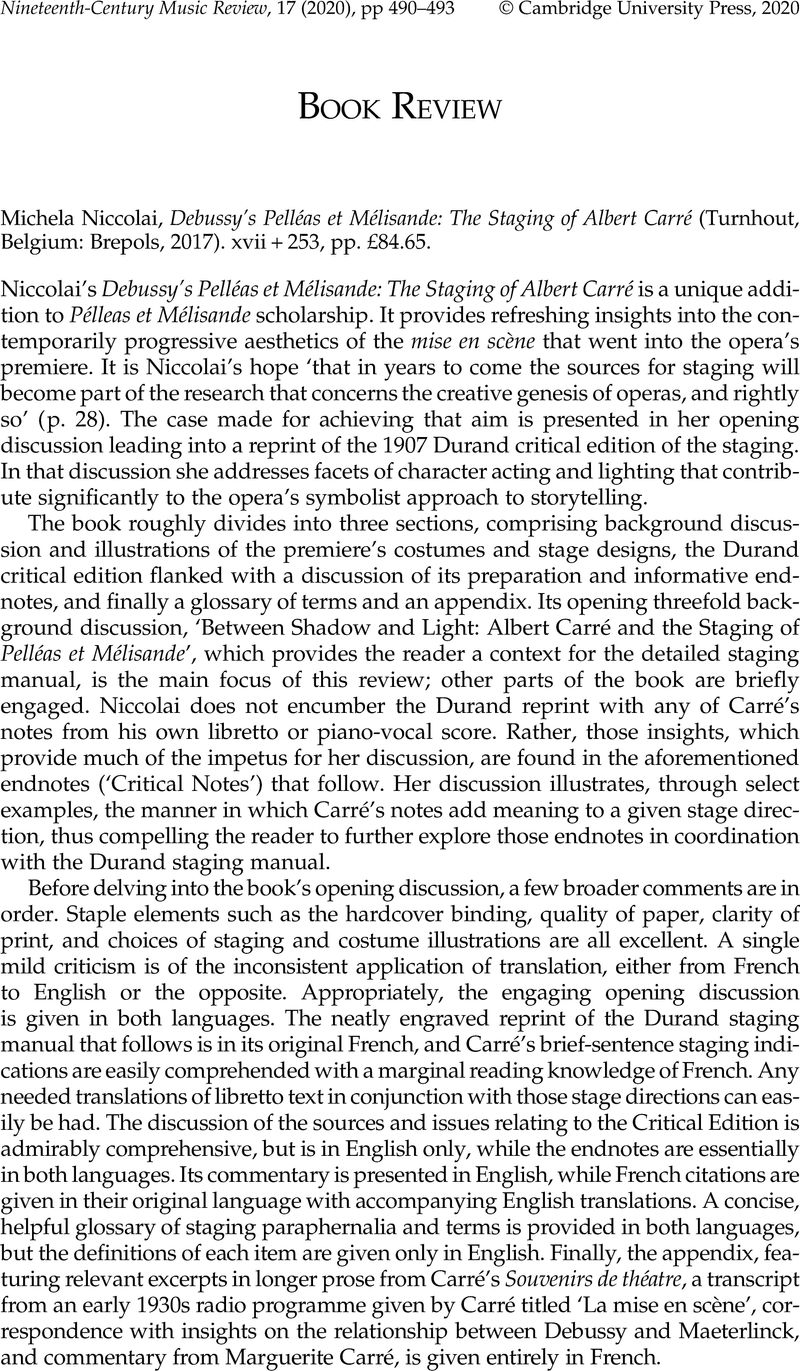No CrossRef data available.
Article contents
Michela Niccolai, Debussy's Pelléas et Mélisande: The Staging of Albert Carré (Turnhout, Belgium: Brepols, 2017). xvii + 253, pp. £84.65.
Review products
Published online by Cambridge University Press: 02 October 2020
Abstract

- Type
- Book Reviews
- Information
- Nineteenth-Century Music Review , Volume 17 , Special Issue 3: The Experience of Listening to Music in the Nineteenth Century , December 2020 , pp. 490 - 493
- Copyright
- Copyright © Cambridge University Press, 2020
References
1 This subheading is a reference to a Debussy remark within his 1902 programme note: ‘Why I Wrote Pelléas’, where he states ‘The drama of Pelléas which, despite its dream-like atmosphere, contains far more humanity than those so-called “real-life documents”, seemed to suit my intentions admirably. In it there is an evocative language whose sensitivity could be extended into music and into the orchestral backcloth.’ See Debussy on Music, ed. Lesure, François and Langham, Richard Smith, trans. Smith, Richard Langham (New York: Alfred A. Knopf, 1977): 75Google Scholar.
2 Appia (1862–1928) never met Wagner. Rather, motivated by the composer's embracing of mythology and his concept of gesamtkunstwerk, Appia theorized, in his writings, ways in which lighting could, in his opinion, more fully realize Wagner's aesthetic visions. Those writings ultimately had an immense influence on future stage directors. For further insights, see Kernodle, George, ‘Wagner, Appia, and the Idea of Musical Design’, Educational Theater Journal 6/3 (Oct. 1954): 223–30CrossRefGoogle Scholar.
3 See Nichols, Roger and Smith, Richard Langham, Claude Debussy: Pelléas et Mélisande (Cambridge: Cambridge University Press, 1989)Google Scholar.
4 See Medici, François de, ‘Composing after Wagner: The Music of Bruneau and Debussy, 1890–1902’, in Debussy's Resonance, ed. de Medici, François and Huebner, Steven (Rochester: University of Rochester Press, 2018): 172–224CrossRefGoogle Scholar.
5 Lucien Jusseaume (1861–1925), set designer, and Charles Bianchini (1860–1905), costume designer, were key artists in the production of the opera's premiere.
6 Carré, Albert, Souvenirs de théâtres réunis, présentés et annotés par Robert Favart (Paris: Plon, 1950): 277Google Scholar.


